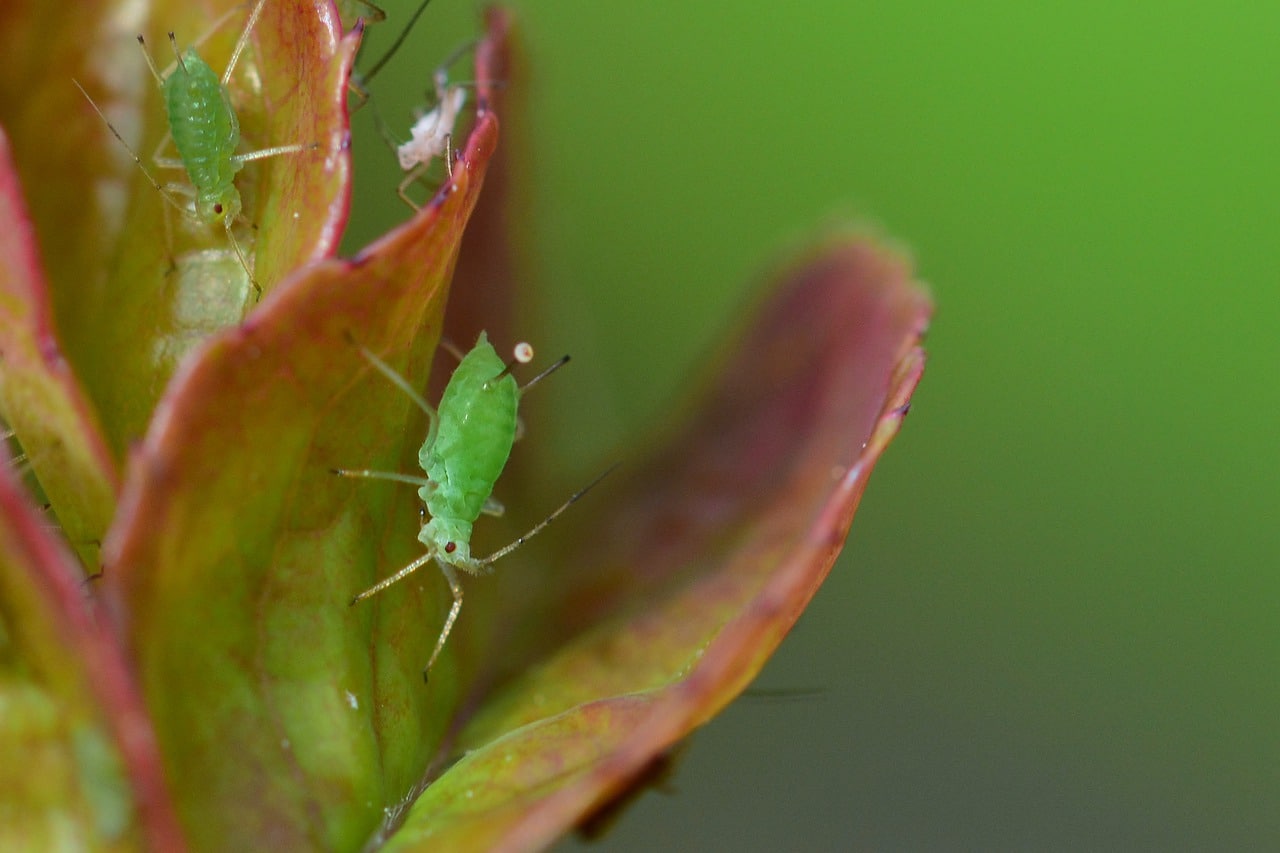Do you know how to get rid of thrips on houseplants in 3 best ways? Isolation and rinsing, insecticides, and sticky traps should help eradicate this problem on your beloved houseplants. You can also use a greenhouse for the plants since pest management is more comfortable in a controlled environment.
However, we still want to keep bugs out of the greenhouse, and infestations can happen even to the most careful gardener. With thrips being tiny, it can be challenging to spot them until the signs show. Therefore, you must address the insects as soon as possible unless you have predatory insects already in the garden to do the work for you.

The chances of having predatory mites and minute pirate bugs naturally existing in your garden or greenhouse is slim, so it’s best to learn the three techniques below.
How To Get Rid Of Thrips On Houseplants Successfully
Isolation and rinsing of plants
The best way to get rid and perhaps even prevent thrips infestation is isolation and rinsing of infected houseplants. You can use this approach in addition to insecticides and sticky traps; after all, sanitation is an essential part of thrips management. For isolation, a simple mesh screen to isolate the infected area can restrict the pests’ movement.
You can also dedicate a quarantine area for new plants and materials before putting them inside. Remember that the new plants and those exposed to them can be potentially harboring thrips. Some gardeners even recommend rinsing the plant, particularly the leaves and their undersides.
You can use a mild liquid soap to kill the thrips in the process and keep the population of pests more manageable. Just remember to be careful with the soap you’ll use towards your houseplants. And since we’re touching the topic of sanitation, always maintain cleanliness.
You might be thinking that houseplants can skip certain management practices, but some can still have fallen debris that can increase the thrip population. Prevention is always easier than solving an infestation, so keep the area for your houseplants clean and make sure it has no entryways for thrips.
Insecticides
The University of California Agricultural and Natural Resources mentioned precautions in using insecticides for thrips management. This is because of the potential injuries they can cause to the plants or beneficial insects. And depending on the time you applied the insecticide, the thrips might already be gone, or it’s too late to prevent damage like virus transmission.
You want to use insecticides responsibly and avoid common mistakes like improper spraying, timing, and wrong target points. You might even need to check the active ingredients first to know when they’ll be effective best or if you’ll need a professional for applying the insecticide. But generally speaking, avoid acephate, organophosphate, or pyrethroids because of the risks of mite outbreaks and contamination of the environment.
A safer insecticide would be something organic that you can spray directly on the leaves. Insecticidal organic soaps would not have any risk of residues compared to more potent chemicals. However, it’s still best to test spray on a few leaves before treating the houseplant thoroughly.
Do you want a more natural approach? Besides organic soaps, neem oil and hot pepper wax spray are also fair considerations for thrip control. Thrips that feed on oil-covered leaves will die like the insects that directly contact them.
Sticky traps
Michigan State University recommends sticky traps for managing thrips. You can place yellow sticky traps among your houseplants, and they should capture adult thrips. However, this will only be effective if the traps are above the canopy since adult thrips can fly.
Besides potentially lowering the thrip population, using sticky traps is also an excellent way to detect thrips if you’re suspecting their presence.
Signs Of Thrips On Houseplants
The University of Georgia mentioned symptoms that you could check to indicate thrips’ presence on your houseplants. For example, the surface of affected plant parts is silver-specked due to the digestive enzymes and feeding mechanism of thrips that breaks the surface.
You may also find the insects’ excrement in the form of tiny black specks. And if there is a black sooty mold, it might be due to the honeydew that thrips tend to excrete. Other signs of thrips include discoloration, shedding, and drying of fruits, buds, flowers, and leaves.
Over time, abnormalities in growth will lead to contortion and deformation, especially on the growing points. When can you find thrips? You’ll commonly find thrips on leaves and flowers, but younger thrips can drop on soil too.
Conclusion
Thrips may be one of the tiniest insects, but they can do significant damage to your plants. You must know how to get rid of thrips on houseplants to control their population, prevent them from occurring again and salvage other plants. Isolation and rinsing of plants, insecticides, and sticky traps are three solutions that you can do together to create an effective thrip management system.
Proper sanitation and quarantine in your area should help prevent thrips from getting to your houseplants. You must also be on the lookout for thrip infestation signs such as specks on leaves and then use sticky traps to confirm if the insects are present. If rinsing the plants or existing predatory insects haven’t solved the problem, you can opt for an organic insecticide safe for your plants and the environment.
